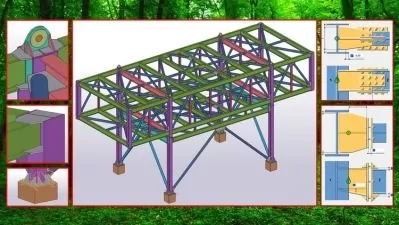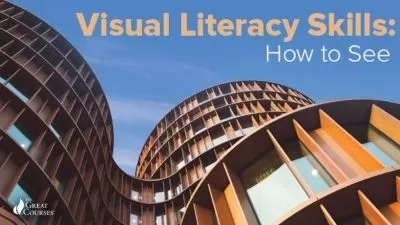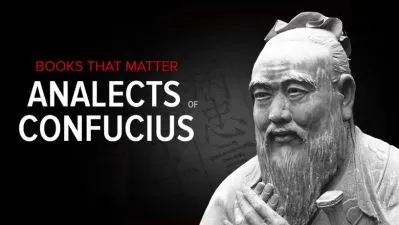Archaeology: An Introduction to the World's Greatest Sites
Eric H. Cline
12:52:14
Description
The work of archaeologists has commanded worldwide attention and captivated the human imagination since the earliest days of the exploration, with groundbreaking discoveries such as the treasures of ancient Egypt, the lost kingdoms of the Maya, and the fabled city of Troy. Archaeology brings us face-to-face with our distant ancestors, with treasures of the past, and with life as it was lived in long-ago civilizations.
Despite the fascinating and often romantic appeal of archaeology, many of us have little idea of what the field actually involves. What, exactly, do archaeologists do? What takes place on an archaeological dig? And how does the reality of the work differ from what we see in Indiana Jones movies?
Archaeology: An Introduction to the World's Greatest Sites, taught by renowned archaeologist and National Geographic Explorer Eric H. Cline, answers these questions and more in rich and provocative detail. This thrilling new course, produced in partnership with National Geographic, introduces you to over 20 of the most significant and enthralling archaeological sites on the planet, providing both an in-depth look at the sites themselves and an insider’s view of the history, science, and technology of archaeology.
Within the course’s 24 visually rich lectures, you’ll study some of the most famous archaeological discoveries of all time, including:
- the tomb of King Tut: the final resting place of ancient Egypt’s boy pharaoh, whose dramatic discovery mesmerized the world in 1922
- the ruins of Pompeii: the astonishingly well-preserved ancient Roman city, which was buried in 79 A.D. by the eruption of Mount Vesuvius
- the terra-cotta warriors at Xi’an: the vast army of life-size ceramic soldiers created to guide China’s first emperor into the afterlife
Throughout the course, Professor Cline offers dynamic commentary and responds to questions archaeologists are frequently asked, such as: How do archaeologists find ancient sites? How is an actual excavation performed? How do archaeologists determine how old something is?
In examining the world’s premier archaeological sites, the lectures explore how archaeology plays a vital role in the advancement of knowledge, by separating folklore and legend from factual history. As Professor Cline makes clear, archaeology is one of the most objective sources we have about history as it really happened, allowing us to cross-check written accounts, as well as to discover information, events, and cultures we knew nothing about.
Travel with a National Geographic Explorer
What began as a haphazard search for famous sites of ancient history has evolved into a highly organized, professional, and systematic study of the peoples and cultures of the past. During this course, you’ll trace the evolution of archaeology from the first crude excavations at Herculaneum to the advanced methods being used at Teotihuacan today. You’ll also gain firsthand insight into cutting-edge technology that has forever changed the field.
And, in this site-oriented exploration, you’ll travel the world: from Ur in Mesopotamia to China’s Shanxi Province; from Masada in Israel to the ancient ruins of Akrotiri in Greece; from Sutton Hoo in England to Machu Picchu in Peru, and many other intriguing locales.
For over a century, National Geographic has been a leader in bringing archaeological discoveries to the world through countless explorations, digs, research projects, and magazine stories. Whether you’re new to the subject or a seasoned archaeology enthusiast, National Geographic’s unique resources will provide an unparalleled glimpse into this fascinating field.
Visit Majestic Civilizations of the Past
These compelling lectures span a stunning range of archaeological discoveries, from excavations on land and under the oceans, to sites located in caverns, frozen in ice, and buried under volcanic ash. Among the many archaeological treasures featured in the course, you’ll study:
- secrets of Egyptology: Take an in-depth look at how the great Pyramids at Giza, the Step Pyramid of King Zozer, and the Sphinx were built. Learn about the deciphering of Egyptian hieroglyphics and the mysterious techniques of Egyptian embalming and mummification.
- the glories of ancient Mesopotamia: Discover the resplendent funerary objects of the celebrated “Death Pits of Ur.” At legendary sites such as Nimrud and Ninevah, explore monumental Neo-Assyrian palaces, with their colossal statues, inscribed slabs, and vast libraries of cuneiform texts.
- Knossos and the cult of the bull: On the island of Crete, investigate the ceremonial, open-air palace of the Minoans; examine its striking wall paintings of sumptuously adorned royals; and explore the dramatic court ritual of bull-leaping and its links to the legend of the Minotaur.
- ancient maritime trade: Delve into one of the most phenomenal archaeological finds of all time, the Uluburun shipwreck. This 3,000-year-old sunken vessel contained a full cargo of luxurious raw materials and finished goods, illuminating Mediterranean trade routes that existed 13 centuries before the Common Era.
- Megiddo, jewel of the Near East: Follow the unfolding excavations at this unique site in northern Israel, where more than twenty ancient cities lie buried, one on top of another, revealing marvels of architecture in a sequence dating from 5,000 years ago to the time of Alexander the Great.
- awe-inspiring archaeological sites of the New World: Across four lectures, travel to the superlative palaces, temple-pyramids, and astronomical structures of New World civilizations from the Maya and the Moche to the Aztecs. You’ll also meet the Nazca, creators of massive geoglyphs in the Peruvian desert.
Look Deeply into the Archaeologist’s Work
In tandem with an exploration of the sites themselves, Professor Cline provides a spirited and highly illuminating look at what archaeologists do and how they do it. Early in the course, you’ll learn about remote sensing technologies such as ground penetrating radar, which allow archaeologists to locate structures hidden from view beneath jungles and deserts.
Within three lectures on the how-to of archaeology, you’ll discover in detail how to excavate buried artifacts, how an archaeological dig is organized and carried out, and how archaeologists use a spectrum of sophisticated technologies to determine the age of sites and artifacts.
Professor Cline enriches the lectures with colorful and revealing stories from the field, drawn from his many years of archaeological work around the world. Among these is his account of his own extensive work at the site of Tel Kabri in Israel, where remarkable discoveries include the largest wine cellar ever found in the ancient Near East.
Professor Cline also weaves engrossing tales of famous and groundbreaking finds, such as Heinrich Schliemann’s unearthing of Troy, the story of intrigue through which the Dead Sea Scrolls were brought to the world, and the dramatic unfolding of archaeology’s first underwater excavation.
With rich visuals from National Geographic and images from the professor’s own dig sites, each fascinating location is brought to life with numerous on-site photos, as well as maps, artwork, animations, and location video such as the original dig footage of Masada, the site of a historic confrontation between imperial Rome and Jewish resistance fighters.
Archaeology: An Introduction to the World's Greatest Sites takes you on a vivid and detailed exploration of archaeology’s most magnificent discoveries, in the company of an expert archaeologist and historian with decades of experience in the field. Join The Great Courses and National Geographic for this globe-spanning journey into our breathtaking archaeological heritage.More details
User Reviews
Rating
Eric H. Cline
Instructor's CoursesDr. Eric H. Cline is a Professor of Classics and Anthropology and the current Director of The George Washington University (GWU) Capitol Archaeological Institute. He holds a Ph.D. in Ancient History from the University of Pennsylvania, an M.A. in Near Eastern Languages and Literatures from Yale University, and a B.A. in Classical Archaeology modified by Anthropology from Dartmouth College. He is also a National Geographic Explorer, a Fulbright Scholar, and a National Endowment for the Humanities (NEH) Public Scholar.
Over more than 30 seasons as an active field archaeologist, he has led excavations and surveys in Israel, Egypt, Jordan, Cyprus, Greece, and the United States.
A prolific researcher and author of more than 100 articles and reviews, Dr. Cline has also written 16 books, including The Battles of Armageddon: Megiddo and the Jezreel Valley from the Bronze Age to the Nuclear Age; Jerusalem Besieged: From Ancient Canaan to Modern Israel; Biblical Archaeology: A Very Short Introduction; and The Trojan War: A Very Short Introduction. His book 1177 BC: The Year Civilization Collapsed was considered for a Pulitzer Prize in 2015.
At GWU, Dr. Cline has won the Oscar and Shoshana Trachtenberg Prize for Teaching Excellence and the Oscar and Shoshana Trachtenberg Prize for Faculty Scholarship. He is also the recipient of the Excellence in Undergraduate Teaching Award from the Archaeological Institute of America.
Dr. Cline has appeared in more than 20 television programs and documentaries, including those on ABC, the BBC, the National Geographic Channel, HISTORY, and the Discovery Channel.

The Great Courses
View courses The Great Courses- language english
- Training sessions 24
- duration 12:52:14
- English subtitles has
- Release Date 2023/06/06
















